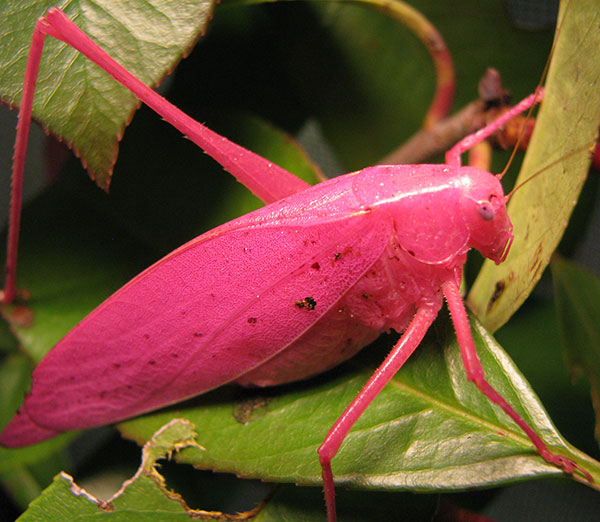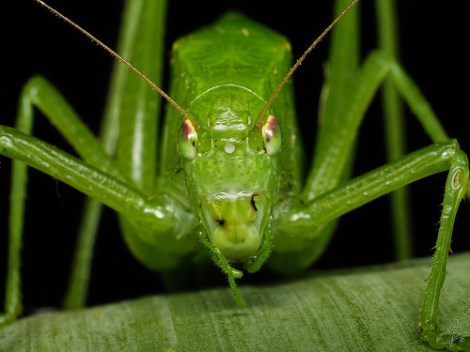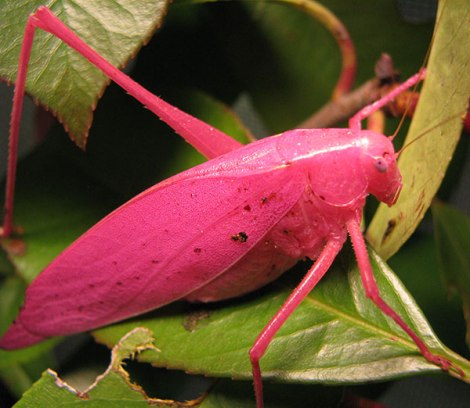Here’s a oblong-winged katydid:
This is a smart katydid. It’s green. It blends in.
Here is another oblong-winged katydid:
Now, this katydid is much more likely to be eaten in the wild. Luckily, it lives at the Audubon butterfly garden in New Orleans with other funny-colored katydids. Katydids that are yellow. Katydids that are orange. Katydids that start out green and turn orange, according to the Audubon researchers:
The body colour changed from green to yellow or orange over successive molts, resulting in a yellow or orange colouration as an adult. These individuals retained the green eye colour throughout the molting process and throughout their entire adult lifespan. On one occasion, an individual from the ‘rainbow cage’ hatched green and changed to yellow through molting. At the final molt it was yellow. The next day it was orange with green eyes and retained the orange colouration throughout the remainder of its adult lifespan.”
At Scientific American, Becky Crew explains that, for about a century, scientists thought that pink katydids came from a particular kind of genetic condition, “erythrism — a genetic mutation controlled by recessive genes that causes an absence of a normal pigment, such as green, and/or an excessive production of another pigment, such as red or pink.” But in breeding these pink katydids, the Audubon researchers discovered that might not be quite right — it’s the more exciting colors that are dominant. Green may actually be the result of the recessive gene.
Crew writes:
Assuming that green is the recessive trait of oblong-winged katydids … how is it that North America is littered [with] greens, not the candy-coloured pinks or yellows or oranges? The team suggest that it could be a case of directional selection, whereby one allele, regardless of being dominant or recessive, has greater fitness than another, causing the gene pool to change over time until eventually a species arrives a situation called fixation, where only one of the alleles remains.
In other words, green katydids don’t get eaten. So eventually there are more of them, and they churn out even more green katydids. Evolution is amazing! But it leads to some boring-colored bugs.






